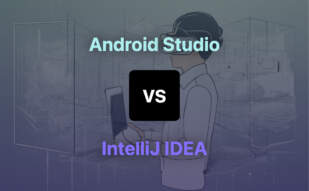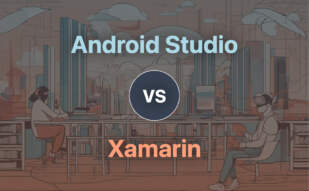Kotlin is an open-source, statically-typed programming language created by JetBrains, first released in 2016. It is widely used for server-side applications, Android development, multiplatform mobile development, and data science. Kotlin draws inspiration from C#, Java, and Scala, offering a modern programming language featuring functional and object-oriented constructs. It is interoperable with Java, allowing for concise, expressive code and reduced app crashes.

For those exploring options beyond Kotlin, alternative frameworks and tools to consider are Android Studio, IntelliJ IDEA, Eclipse, Xamarin, Flutter, React Native, Xcode, Unity.
Android Studio
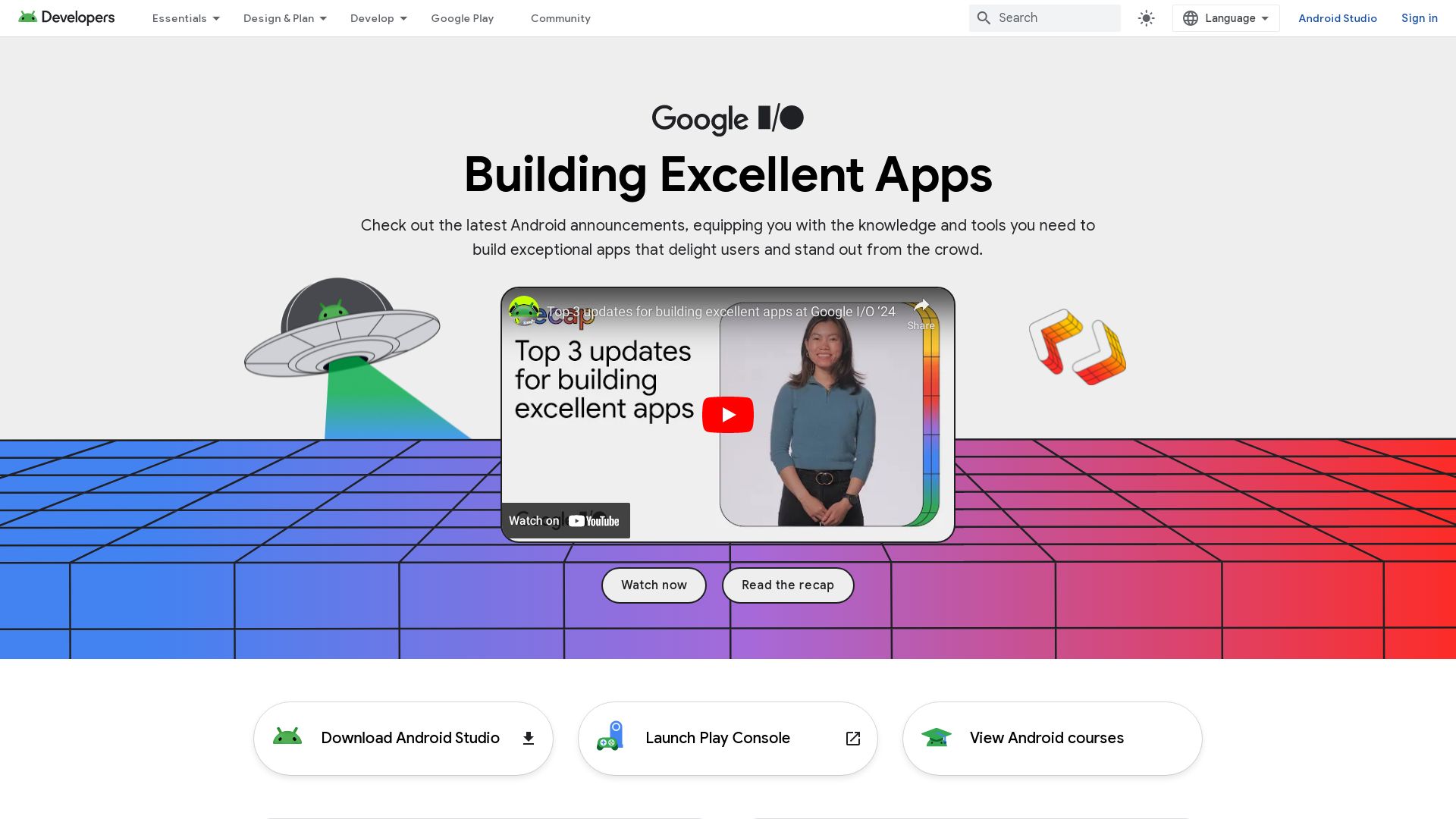
As the official IDE for Android app development, Android Studio is an IntelliJ IDEA-based platform that provides a myriad of tools for efficient app creation.
Android Studio Top Features
- Flexible Gradle-based build system and a fast, feature-rich emulator.
- Full-suite development for all Android devices.
- Live edit feature to instantaneously update components in emulators and real devices.
- Extensive suite of testing tools and frameworks that helps in performance optimization and version compatibility troubleshooting.
- Diverse language support featuring C++ and NDK, Java, Kotlin and more.
| Key Feature | Detail |
|---|---|
| GitHub integration | Furthers feature building and importing sample code. |
| Google Cloud Platform support | Allows ease of integrating cloud-based services to your app. |
| Android Virtual Device (Emulator) | Facilitates running and debugging of apps. |
Android Studio Downsides
The IDE, although robust, calls for a for a system with 8 GB RAM, 8 GB disk space, and a screen resolution of 1280 x 800.
Android Studio Pricing
Android Studio is free to download and use, making it an accessible choice for developers.
Android Studio Use Cases
Use Case 1 – App Builders
Android Studio provides several tools that make it ideal for app builders. With its GitHub integration, developers can build and import sample codes seamlessly.
Use Case 2 – Cloud-based Service Providers
Thanks to its built-in Google Cloud Platform support, the Studio is also powerful for those looking to integrate their applications with cloud services.
Use Case 3 – Developers Optimizing for Performance
Android Studio’s array of testing tools, memory tracking, and profiling provisions help developers ensure optimal performance of their apps.
IntelliJ IDEA

Put your gloves on, it’s time to rock the coding world with IntelliJ IDEA, an edgy Integrated Development Environment (IDE) developed by the tech geniuses over at JetBrains. It’s not just about Java and Kotlin with this IDE, it defies the norms and shatters the glass ceiling with support for other JVM languages like Scala and Groovy, not to mention languages through plugins such as Python, Ruby, PHP, SQL, Go, JavaScript, and TypeScript! Think of IntelliJ IDEA as the rogue of the IDE world – trusted yet unpredictable.
IntelliJ IDEA’s Badass Features
- Bundled plugins offering full functionality of JetBrains’s specific IDEs (i.e., PyCharm, WebStorm, PHPStorm).
- Keyboard shortcuts for almost every action, turbocharging productivity and speed.
- Automatic code generating, refactorings, and integral debugger and profiler for JVM – say hello to a streamlined programming experience.
- Integral Terminal for command-line shell fun within the IDE – let’s roll up those sleeves.
- Direct access to databases in the Ultimate edition through the built-in version of DataGrip.
- Support for version control systems: Git, Mercurial, Perforce, Subversion – never lose your code progress.
- Extracted from open source under Apache License 2.0, democratizing the software world since 2009.
IntelliJ IDEA’s Raw Edges
- Albeit powerful, needs a decent hardware setup to run smoothly.
- Lacks native VCS and database support in the Community Edition.
- Potential learning curve with keyboard shortcuts and interface customization.
IntelliJ IDEA Pricing
Want to try before you buy? The Early Access Program (EAP) has come to your rescue – get IntelliJ IDEA Ultimate FREE during the EAP phase. For the long haul, choose between the frugal Community Edition or the feature-rich Ultimate Edition. You decide your tech journey!
IntelliJ IDEA Use Case Drive-bys
Use case 1: Slick Web Development
Whether you’re developing in PHP or JavaScript, IntelliJ IDEA has your back with built-in intelligence, nifty shortcuts, and comprehensive plugins.
Use case 2: Smooth Android Development
IntelliJ IDEA swaggers into the Android development space with integrated Android Studio functionality – offering a seamless experience for App development.
Use case 3: Database Management
Fiddling with databases? Use the Ultimate Edition’s built-in version of DataGrip for direct access to databases – power at your fingertips!
Eclipse
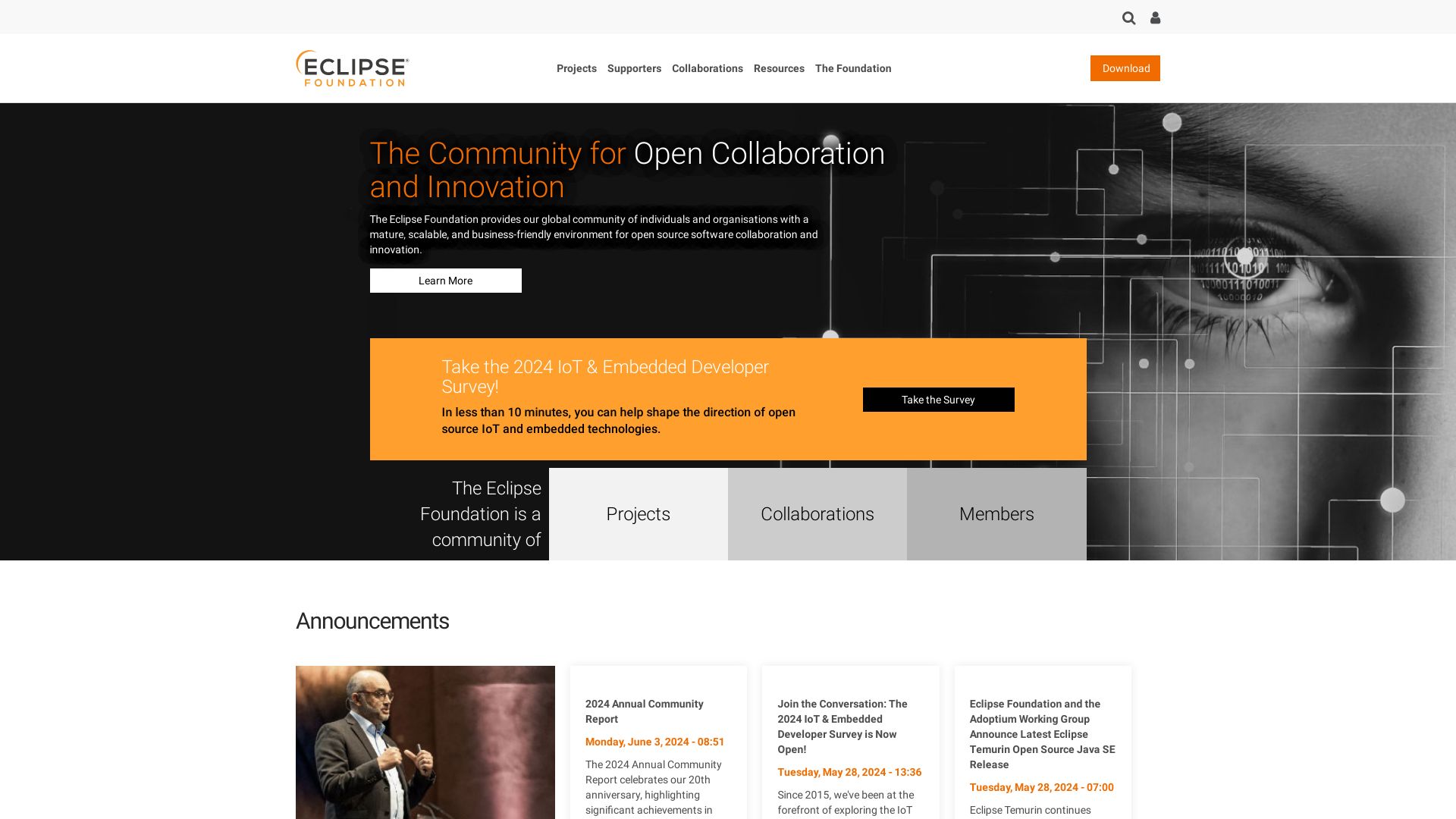
Borning from the computing powerhouse IBM in the late ’90s, Eclipse quickly became a stalwart on the computer programming field. It is an Integrated Development Environment (IDE), one that lets developers write, test, and implement their code in various languages. Known for its extensive Java Development Tools (JDT), Eclipse is second only to JetBrains’ IntelliJ IDEA in Java environment popularity, as of 2016.
Eclipse Top Features
- Extensive plugin ecosystem: Despite its Java popularity, Eclipse is no one trick pony. It includes plugins for programming languages ranging from Ada to Erlang, from Perl to Python, even accommodating for specialized frameworks like Ruby on Rails.
- Extensible SDK: The Eclipse SDK is flexible and broad enough to cater for more than just Java and Scala developers. It seamlessly integrates with C/C++, PHP, and a range of other languages.
- Open-Source: Eclipse is, and always has been, open-source under the Eclipse Public License, empowering developers to remain flexible and customizable.
| Functionality | Details |
|---|---|
| OSGi Implementation | Eclipse utilises Equinox, its own open-source OSGi implementation to manage the platform’s plugins. |
| Development Support | Eclipse supports 44 languages, catering for varied development needs through its extensive reach to runtime systems and development tools. |
Eclipse Downsides
- Customized Database: Eclipse uses a compressed database (SCID) for project code, which can lead to the inability of accessing individual classes outside the tool.
- Incompatibilities: Eclipse is released under its own Eclipse Public License. Being incompatible with the GNU General Public License, it may limit some users working on GNU projects.
Eclipse is Free
Yes, the best things in life are indeed free. Eclipse is an open-source platform and therefore, doesn’t require any proprietary purchase or subscription.
Eclipse Use Cases
Use case 1
The varied range of language support makes Eclipse an excellent choice for multi-lingual software projects. Whether your stack includes Java, Python or Lua, Eclipse is versatile to accommodate them all.
Use case 2
Eclipse’s open-source nature and extensive customization options make it an excellent option for developers working on startup projects, providing the cost-effectiveness without compromising flexibility.
Use case 3
For larger development teams, the dynamic updates and simplicity of Eclipse’s user interface facilitates agile application development, making project collaboration seamless.
Xamarin
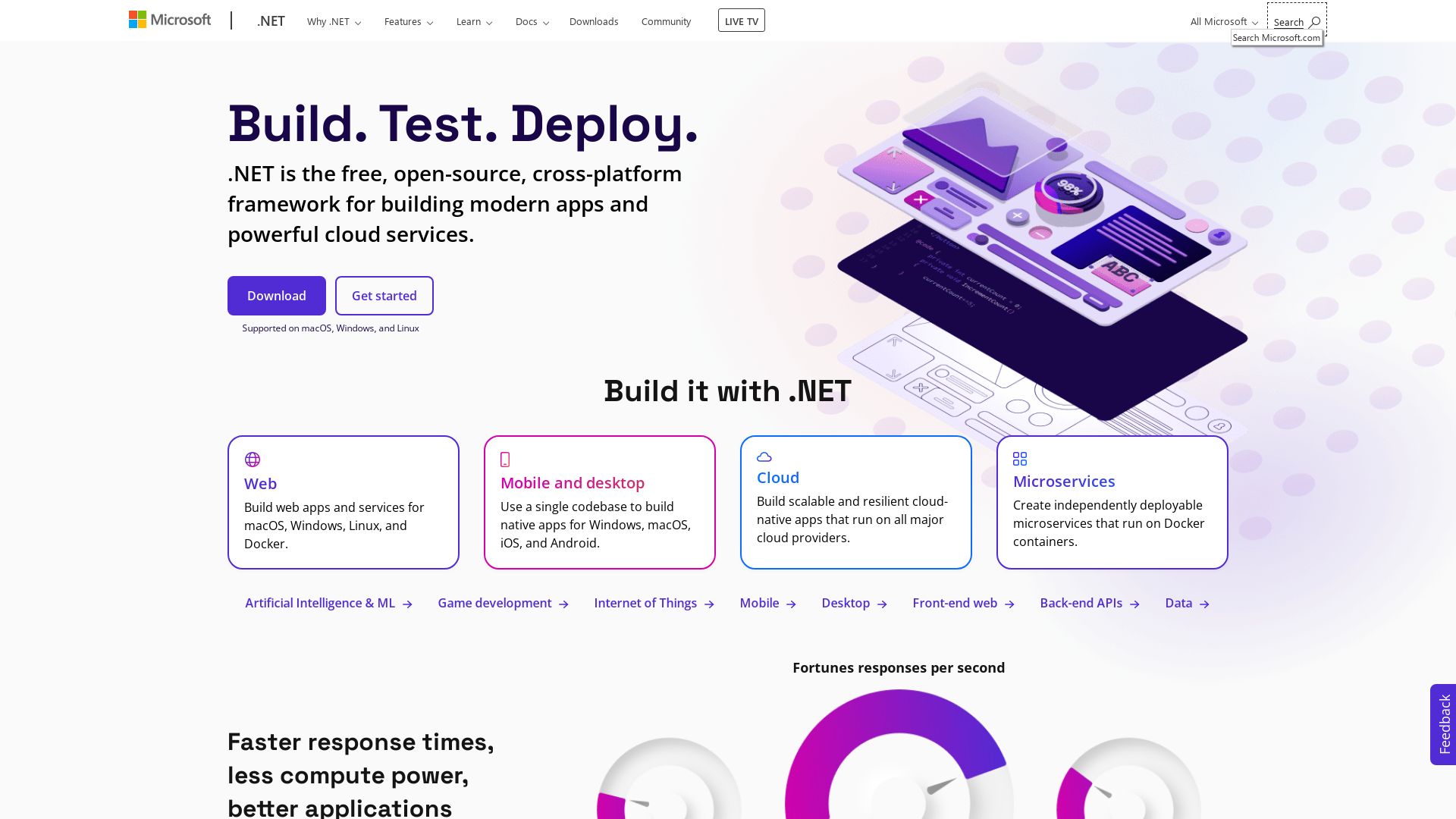
An open-source platform, Xamarin is designed with modern and native application development in mind for iOS, Android, Windows with .NET. Ideal for developers seeking cross-platform capabilities, Xamarin leverages a C# coding framework within the Visual Studio environment.
Xamarin Top Features
- .NET based: Build applications for iOS, Android and Windows using .NET.
- Code Sharing: Almost 90% of your code can be shared across platforms, reducing workload and increasing efficiency.
- Platform Support: Develop applications on both PC and Mac. However, iOS compilation requires a MacOS machine.
- Cross-Language Interop: Xamarin offers complete binding for underlying SDKs, Objective-C, Java, C and C++.
- Robust Base Class Library: Provides access to a rich library that .NET developers are accustomed to.
| Xamarin.Mac | Allows to build fully native Mac apps using .NET and C#. |
| Xamarin.Forms | A UI toolkit for creating native cross-platform mobile applications for iOS, Android, and Windows from a single shared codebase. |
| Xamarin.Android, Xamarin.iOS | Helps to build fully native Android and iOS apps using .NET and C#. |
Xamarin Limitations
- App size: Xamarin applications are significantly larger than native applications which can affect download rates.
- Compatibility: Xamarin sometimes struggles with compatibility issues with third-party Libraries and Tools.
Xamarin Use Cases
Use case 1
With its powerful cross-platform capabilities, Xamarin is ideal for developers tasked with app migration. Its shared coding environment allows for easier transition between platforms.
Use case 2
Wearable tech: Xamarin supports development for Android Wear and Apple Watch, making it a reliable choice for tech innovators.
Use case 3
Time-sensitive projects: Thanks to code reusability, Xamarin is the best choice for developers under a tight deadline.
Flutter
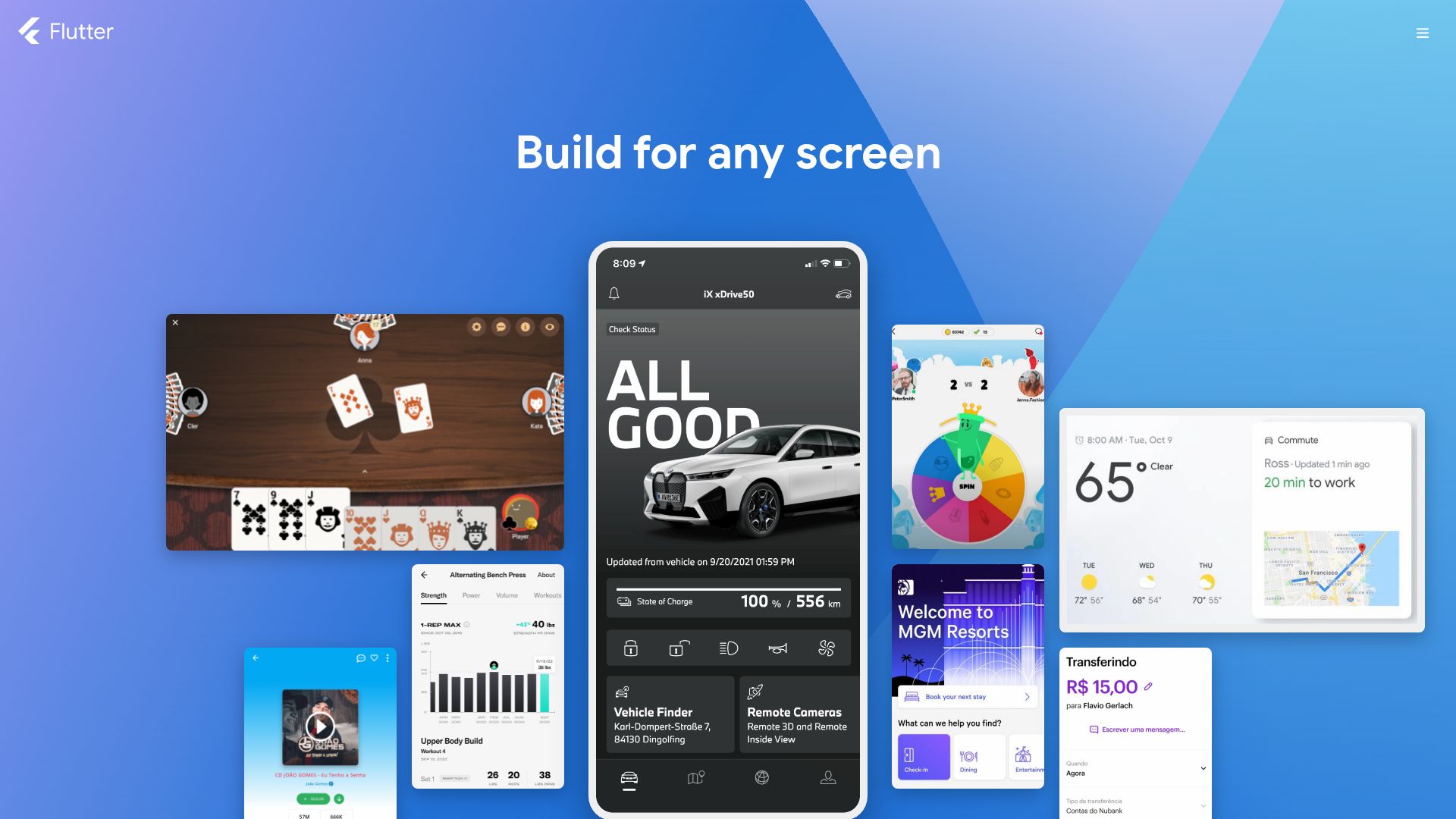
Enter the digital arena with Flutter, a Google-powered, open-source UI software development kit. Recorded as having over a million published apps built with it, Flutter stands tall in the battlefield of web development.
Flutter Top Features
- Developed with C, C++, and Dart, capable of consistent rendering at a cinematic 120 frames per second.
- A broad platform spectrum including Android, iOS, Web platform, Linux, macOS, and Windows.
- Flutter 2, launched in March 2021, bolstered official support for web applications and heralded early-access desktop application support.
- Groundbreaking Flutter 3, launched in 2022, expanded supported platforms to six.
- The main strength, Flutter’s consistent UI rendering across multiple platforms.
| Release | Improvements |
|---|---|
| Flutter 1.17.0 and Dart 2.8 | Boosted performance on iOS devices by approximately 50% |
| Flutter 2.14 and Dart 2.5 | Enhanced Android full-screen mode and stable support for Apple Silicon |
| Flutter 3.0 | Expanded supported platforms to six |
Flutter Limitations
Despite its impressive game, Flutter is not without its challenges.
- Still fairly new in the dev world, Flutter was released initially in 2017. It’s still perfecting its moves and has occasional stability issues.
- While its usage of Dart gives it a unique spin, it also presents a learning curve for developers more familiar with other languages.
Flutter Pricing
Part of Flutter’s winning strategy is its open-source nature. Absolutely free to use, it provides developers with a high-value toolkit without tapping into their resources.
Flutter Use Cases
Use case 1: Cross-platform App Development
Its ability to implement the same UI across multiple platforms makes Flutter an excellent choice for cross-platform app development.
Use case 2:Quick and Efficient Development
On a tight schedule? Flutter’s rich widget library and consistent UI rendering can help slash development time significantly.
Use case 3: Third-Party Integrations
Flutter’s ecosystem is teeming with third-party packages, which can streamline integrations and thus make the app development process more efficient.
React Native
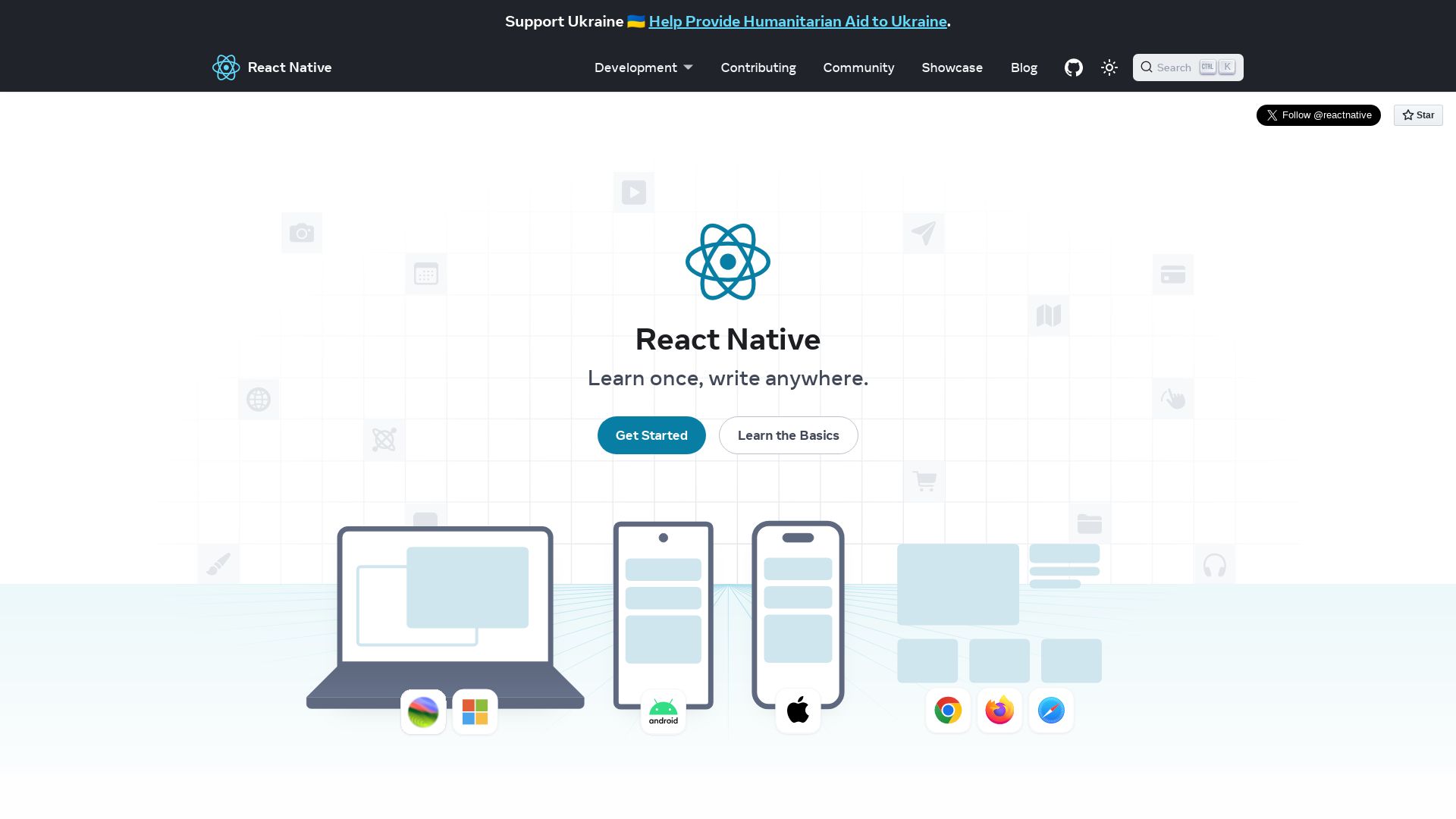
Put your hands together for React Native—a formidable JavaScript framework for creating native apps for Android and iOS. Merging the strengths of native development with a robust JavaScript library, this prodigy creates native-like experiences without compromising on user interactions.
React Native Top Features
- Hosts an amalgamation of platform agnostic native components like View, Text, Image for a holistic user interface design.
- Step up your game with its lightning-speed iterations. Say goodbye to biding time for native builds to complete.
- Frequently updates, thanks to a proactive React Native team. Innovation is always around the corner!
- Proudly open-source, brought to you by Meta Platforms, Inc., and maintained by tech titans like Facebook and Microsoft.
- Employs the JavaScriptCore runtime and Babel transformers while supporting new JavaScript (ES6+) features.
- Provides faster mobile development and efficient code sharing without sacrificing app quality.
| Native UI Elements | Doesn’t rely on webviews, provides a seamless user experience with native elements. |
| Type Safety | Often employs TypeScript over JavaScript to uphold type safety. |
React Native Downsides
- Though mature, it is a young project compared to others, hence may offer room for improvement.
- Debugging could get complex, particularly at the junction of React and the host platform.
- Documentation is an evolving process, adapting to React Native’s rapid innovation cycle.
React Native Pricing
Guess what? React Native is an open-source framework. So, you can dive right in without fussing over the budget. Yes, it’s free!
React Native Use Cases
Use case 1
If you’re looking to develop applications across Android, Android TV, iOS, macOS, tvOS, Web, Windows, UWP—React Native is your magic wand. Its scalable cross-platform capabilities make it a must-have in your web development arsenal.
Use case 2
Developer on a deadline? React Native’s lightning-fast iteration affords you speed without sacrificing quality. When it’s crunch time, React Native is your best bet.
Use case 3
If you’re managing a team that cannot afford to split their focus between multiple platforms, React Native is your game. It offers a single codebase to maintain multiple platforms, enabling your team to streamline their work.
Xcode
Stepping under the technological spotlight, we introduce Xcode, Apple’s veteran Integrated Development Environment (IDE). Since its birth in 2003, Xcode has been the backbone of macOS software development, extending its reach across platforms like iOS, watchOS, iPadOS, and tvOS.
Xcode’s Top|Best Features
- Multi-language support: Xcode features unyielding support for a substantial set of programming languages, including Swift, Objective-C, AppleScript, C, C++, Ruby, and Python.
- Playgrounds: A unique feature that beckons experimentation and swift progress in Swift development. It has been a crucial educational tool, assisting in interactive tutorials and guided tours.
- Cloud testing: Enhances your interaction with your app, providing detailed feedback to fine-tune your development process.
- Integrated Git: For fostering effortless version control and automatizing tasks traditionally catered to by Git from the command line.
| Feature | Description |
|---|---|
| Interface Design | Featuring the Auto Layout system, Xcode allows for the development of responsive applications. |
| SwiftUI | Xcode accommodates the broader Swift programming language and SwiftUI for a holistic development experience. |
| Mac Catalyst | Transforms iPad apps into native Mac applications with a simple checkbox toggle, blurring the boundaries between platforms. |
Xcode’s Limitations|Disadvantages|Downsides
- Requires the latest macOS system to run, limiting flexibility for users with older systems.
- For all its comprehensive offerings, the use of Xcode demands an Apple Developer Program subscription, at an annual cost of $99.
- Loss of specific features over time, such as Shared Workgroup Build and WebObjects tools and frameworks for Java web apps.
Xcode Pricing
Though available free of charge via the Mac App Store and Apple Developer website, to unlock Xcode’s full potential requires an Apple Developer Program subscription at $99 per year.
Xcode’s Use Cases
Use case 1
For macOS developers seeking a robust, integrated environment for creating software across Apple’s various platforms.
Use case 2
For educators, utilizing the Playgrounds feature to create interactive tutorials and guided tours to teach programming.
Use case 3
For developers looking to create responsive applications using Auto Layout system and integrated support for Dark Mode, localization, accessibility, and dynamic type provided by Swift.
Unity

Established in 2005, Unity is a robust engine for developing both 3D and 2D games. Known for its cross-platform functionality, Unity empowers developers to create a variety of applications, from augmented reality to immersive 3D simulations.
Unity Top Features
- A broad suite of tools, rendering technology, and features for top-quality game creation
- Adaptable with numerous operating systems
- Unity’s enriched asset store filled with diverse pre-designed textures and features
- Available in both free and premium versions, all loaded with advanced features
- Active developer community for troubleshooting, feedback, and system improvement
| Feature | Description |
|---|---|
| Development Language | Includes BOO script, Javascript, and C# |
| Subscription Tier | Currently offers no Unity Plus subscription tier |
| Use | Promotes creation of mobile games and AR/VR-featured games |
Unity Downsides
- Recent pricing redesign leading to backlash from developers
- Concerns over potential abuse of per-install fees
- Rising mistrust due to sudden, unannounced changes in fee structure
- Developers worry about compromised financial sustainability due to unexpected pricing shifts
Unity Pricing
A new Unity pricing model will come into effect on January 1, 2024. Developers will need to pay a fee each time a game using Unity software is installed. However, there will be no fees until a game reaches $200,000 in income and surpasses 200,000 installations. It’s important to note that games bought in “standard” markets like the US and UK bear a higher fee than “emerging” markets such as India and China.
Unity Use Cases
Use case 1: Cross-platform Gaming
With compatibility across various operating systems, Unity offers developers a seamless experience in building games for both Android and iOS platforms.
Use case 2: Augmented Reality Development
Unity facilitates and promotes the creation of applications with augmented reality features, aligning developers’ projects with cutting-edge technologies.
Use case 3: Community Learning and Support
Unity’s active developer community aids in problem-solving, encourages open communication, and provides valuable feedback for system enhancements.
Tiffany Brise
Content writer @ Aircada, patiently awaiting a consumer AR headset that doesn’t suck.




